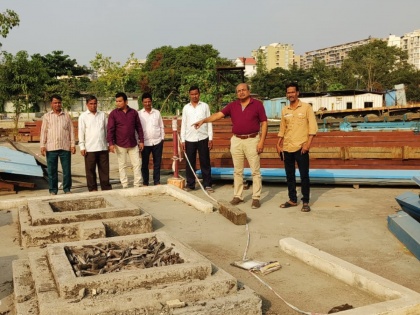NGT asks MCZMA to explain CRZ nod for Balaji Temple on Navi Mumbai Coast
By Amit Srivastava | Published: February 19, 2024 02:28 PM2024-02-19T14:28:09+5:302024-02-19T14:28:23+5:30
The National Green Tribunal (NGT) has asked the Maharashtra Coastal Zone Management Authority (MCZMA) to explain its rationale for ...

NGT asks MCZMA to explain CRZ nod for Balaji Temple on Navi Mumbai Coast
The National Green Tribunal (NGT) has asked the Maharashtra Coastal Zone Management Authority (MCZMA) to explain its rationale for granting Coastal Regulation Zone (CRZ) clearance to a 40,000-square-meter plot for the Tirupati Balaji temple on the Ulwe coast in Navi Mumbai. Green groups have voiced concerns about the project's environmental impact.
The NatConnect Foundation, represented by director B.N. Kumar, has challenged the Coastal Regulation Zone (CRZ) clearance granted for the construction of a Balaji temple in Ulwe, Navi Mumbai. Kumar argues that the 40,000 square meter plot allocated for the temple was previously part of a temporary casting yard for the Mumbai Trans Harbour Link (MTHL) project, making it a restricted zone. Kumar's application submitted to the National Green Tribunal (NGT) highlights that Google Earth maps from 2018 depict the plot as a "vast stretch of intertidal wetlands, fishing ponds, mudflats, and even mangroves." He asserts that the Maharashtra Coastal Zone Management Authority (MCZMA) failed to consider the environmental impact of the casting yard when granting CRZ clearance in November 2023.
During a recent hearing, Kumar's counsel, Ronita Bhattacharya, presented evidence, including maps from the Maharashtra State Remote Application Centre (MRSAC), indicating the presence of mudflats and wetlands in the designated temple plot. The NGT bench, led by Justice Dinesh Kumar Singh and expert member Dr. Vijay Kulkarni, acknowledged the applicant's concerns regarding the project's potential ecological ramifications.
CRZ Notification Requirements:
The bench emphasized the CRZ clearance procedures outlined in Regulation 8 of the CRZ Notification-2019 issued by the Ministry of Environment, Forest and Climate Change (MoEFCC). These regulations mandate utilizing CRZ maps prepared by authorized MoEFCC agencies based on High Tide Line and Low Tide Line specifications provided by the National Centre for Sustainable Coastal Management (NCSCM). Additionally, the relevant project layout must be superimposed on the CRZ map, clearly indicating its boundaries and CRZ category within the approved Coastal Zone Management Plan (CZMP).
Future Developments:
The NGT has directed the NatConnect Foundation to file a fresh plea against the CRZ nod, considering the newly presented evidence regarding the plot's previous use and potential environmental impact. This case highlights the ongoing debate surrounding coastal development and the importance of adhering to environmental regulations.
Open in app